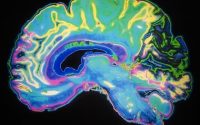Researchers develop new approach to improve visual perception training
![]()
Constant training improves the capacities of human perception. Just as years of practice hone the senses of smell and taste of sommeliers, for example, so too are experienced radiologists able to spot anomalies in X-rays at a glance.
Conventional training methods in the medical field of visual perception have been limited, however, as improvements have been obtainable only in the specific area of the field of vision that is being exercised—a phenomenon known as location specificity. If somebody is recovering from acute vision loss after an accident, for example, their eyesight has to be individually trained for various parts of the visual field during their rehabilitation programs, which is a laborious process.
This is so because the visual system processes the world in a spatially ordered manner. “Neurons that process two neighboring areas in the visual field are also located in close proximity to each other in the brain,” explains Professor Zhuanghua Shi from the Chair of General and Experimental Psychology at LMU. “Consequently, visual training generally produces plasticity in a small group of neurons that cover a very specific location of the field of vision.”
A new study recently published by a team of researchers led by Shi in the journal Proceedings of the National Academy of Sciences now offers an approach that could remove this limitation.
“We’ve cracked the code for how to expand the advantages of visual training to the entire field of vision,” says Shi’s colleague Professor Heiner Deubel. In contrast to traditional methods, in which visual stimuli are shown merely at specific locations in the visual field, the study participants actively explored the visual stimuli through movement of their eyes.
This innovative approach induced the participants to use certain mechanisms that are associated with eye movements and flexibly encode the location of the visual stimuli. As a result, their perceptual capacities not only improved in the area they were looking at, but this increased ability also spread to other, untrained sections of their visual field.
The results of the study indicate that the targeted activation of eye movements in perceptual learning accesses completely different brain mechanisms than previous methods. “This is a very interesting prospect especially for programs of visual rehabilitation, which the new approach can make more effective and less cumbersome,” says Shi.
More information:
Lukasz Grzeczkowski et al, Perceptual learning across saccades: Feature but not location specific, Proceedings of the National Academy of Sciences (2023). DOI: 10.1073/pnas.2303763120
Journal information:
Proceedings of the National Academy of Sciences
Source: Read Full Article


